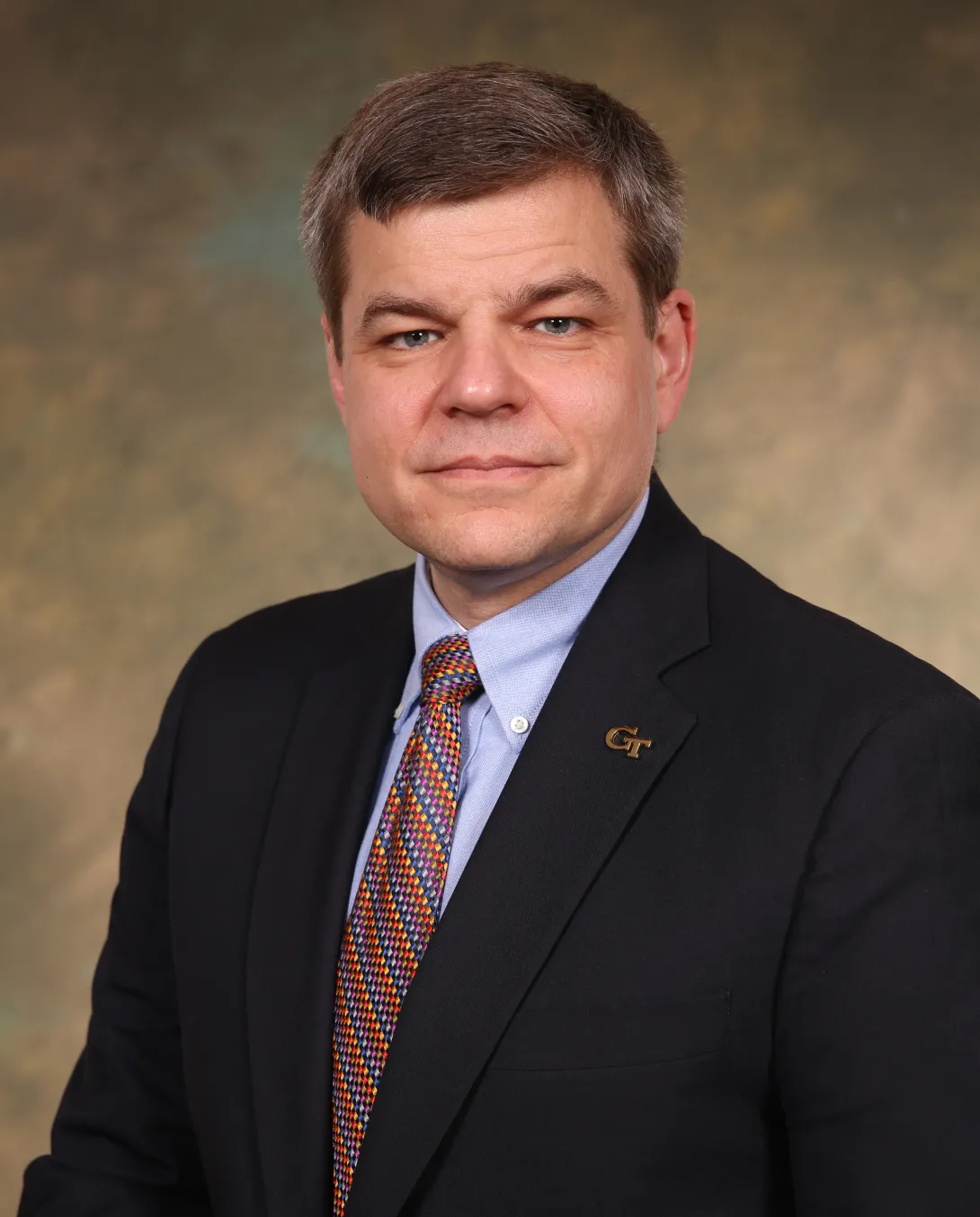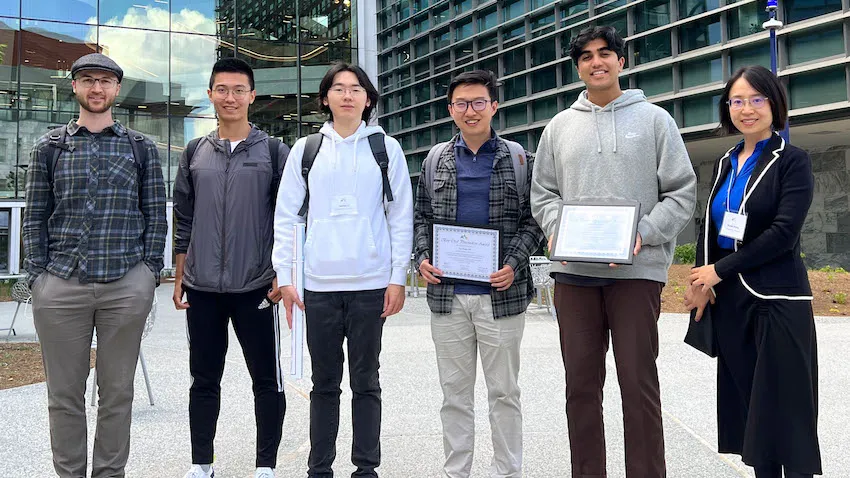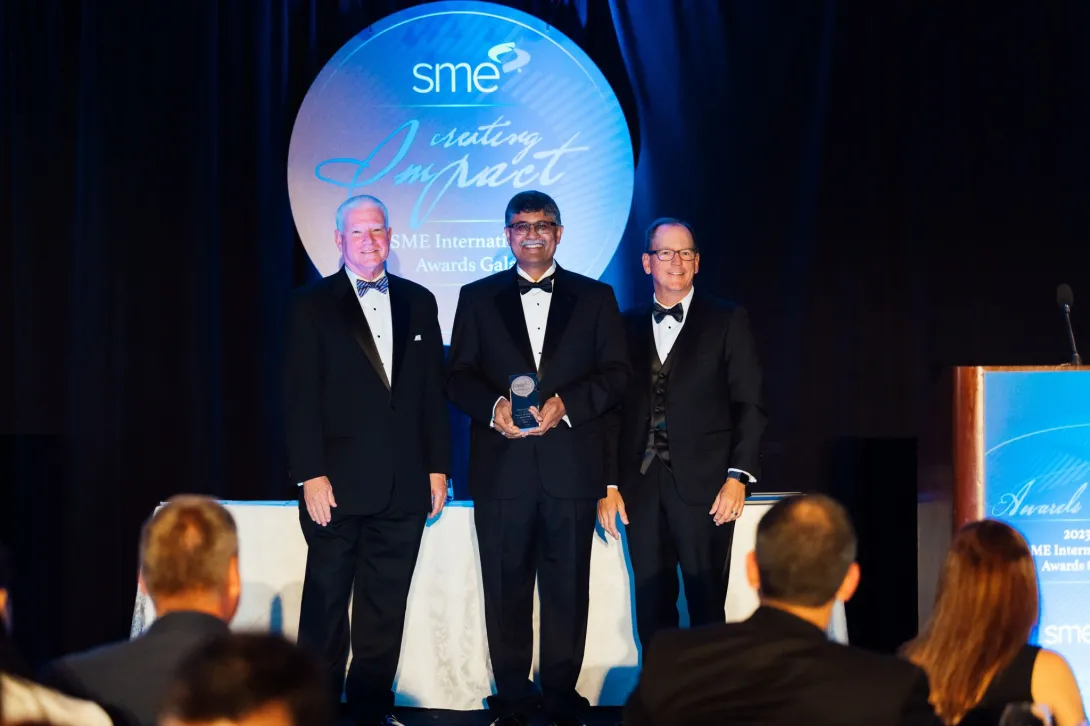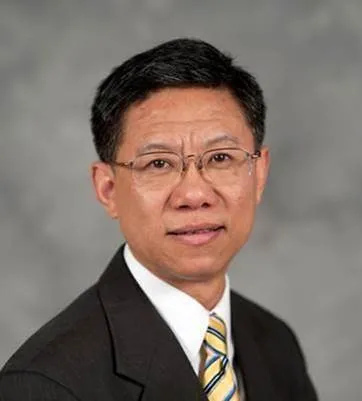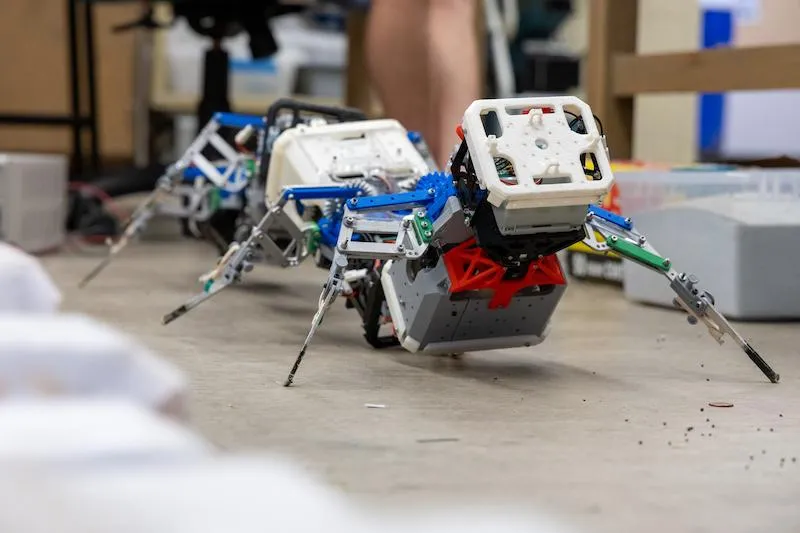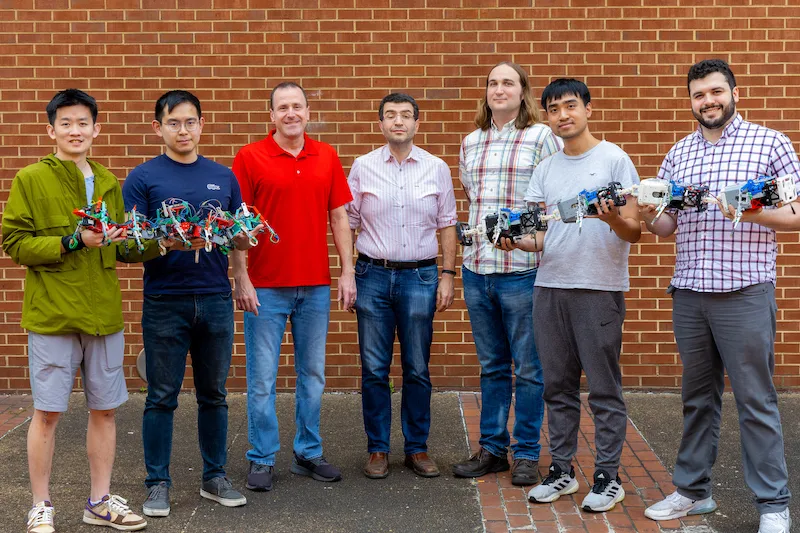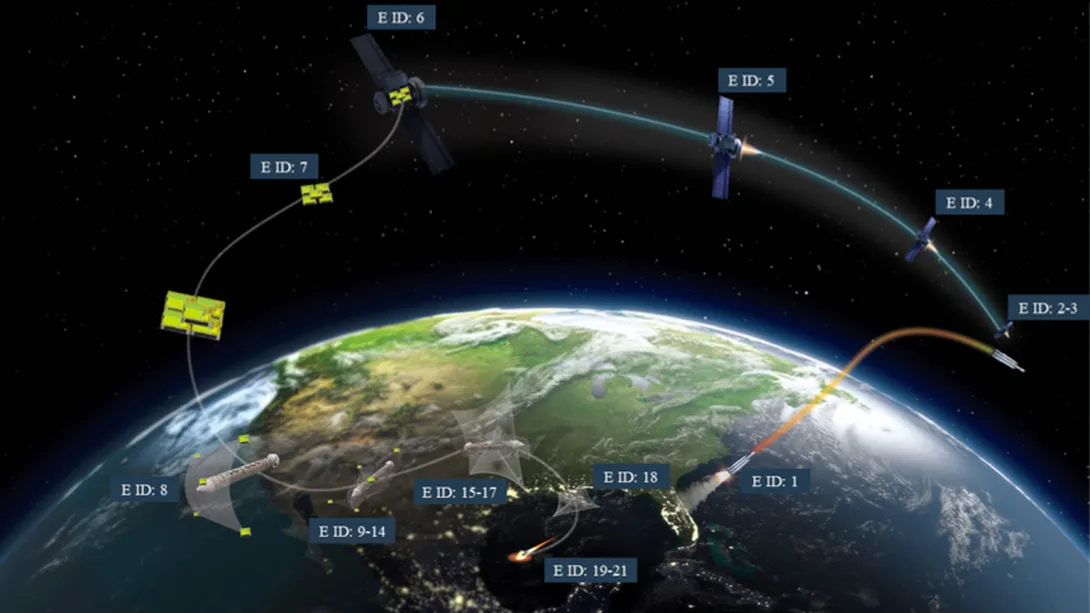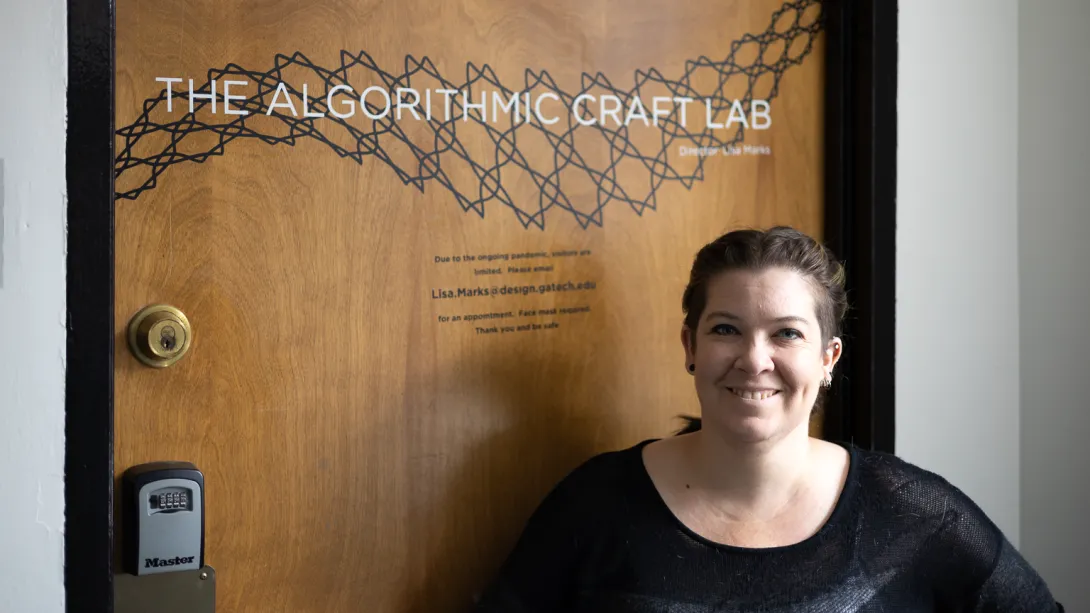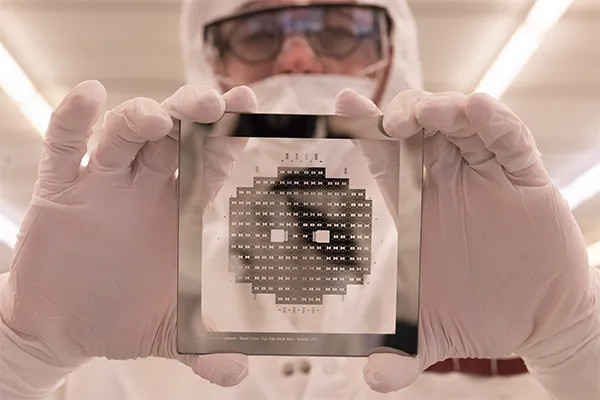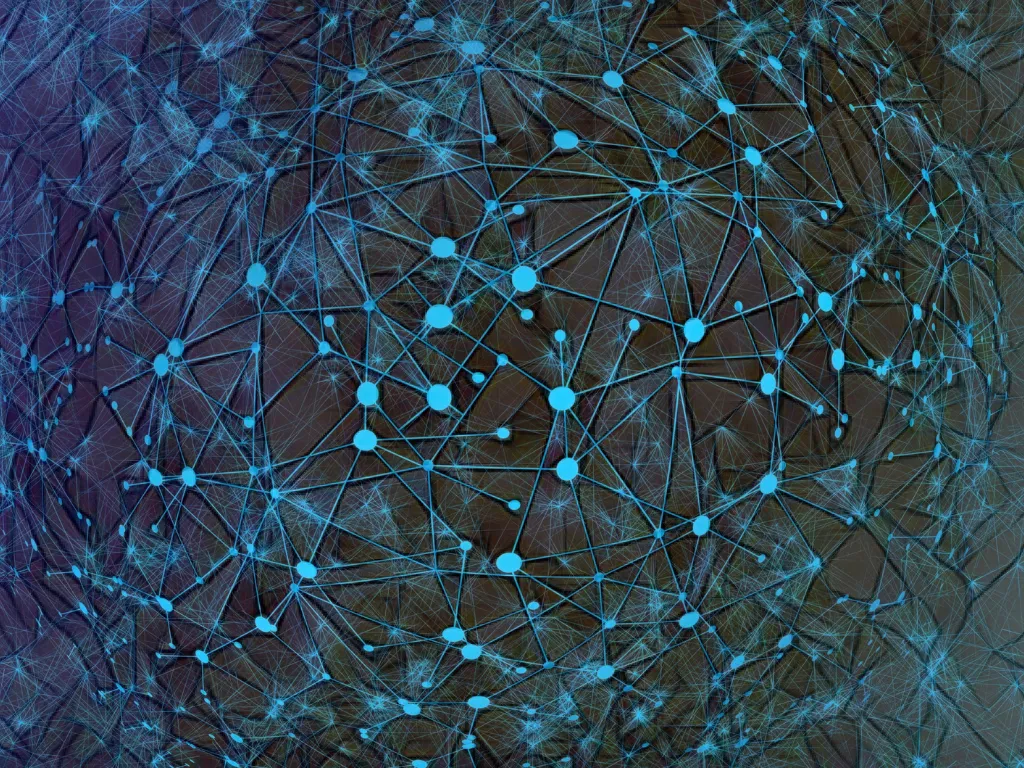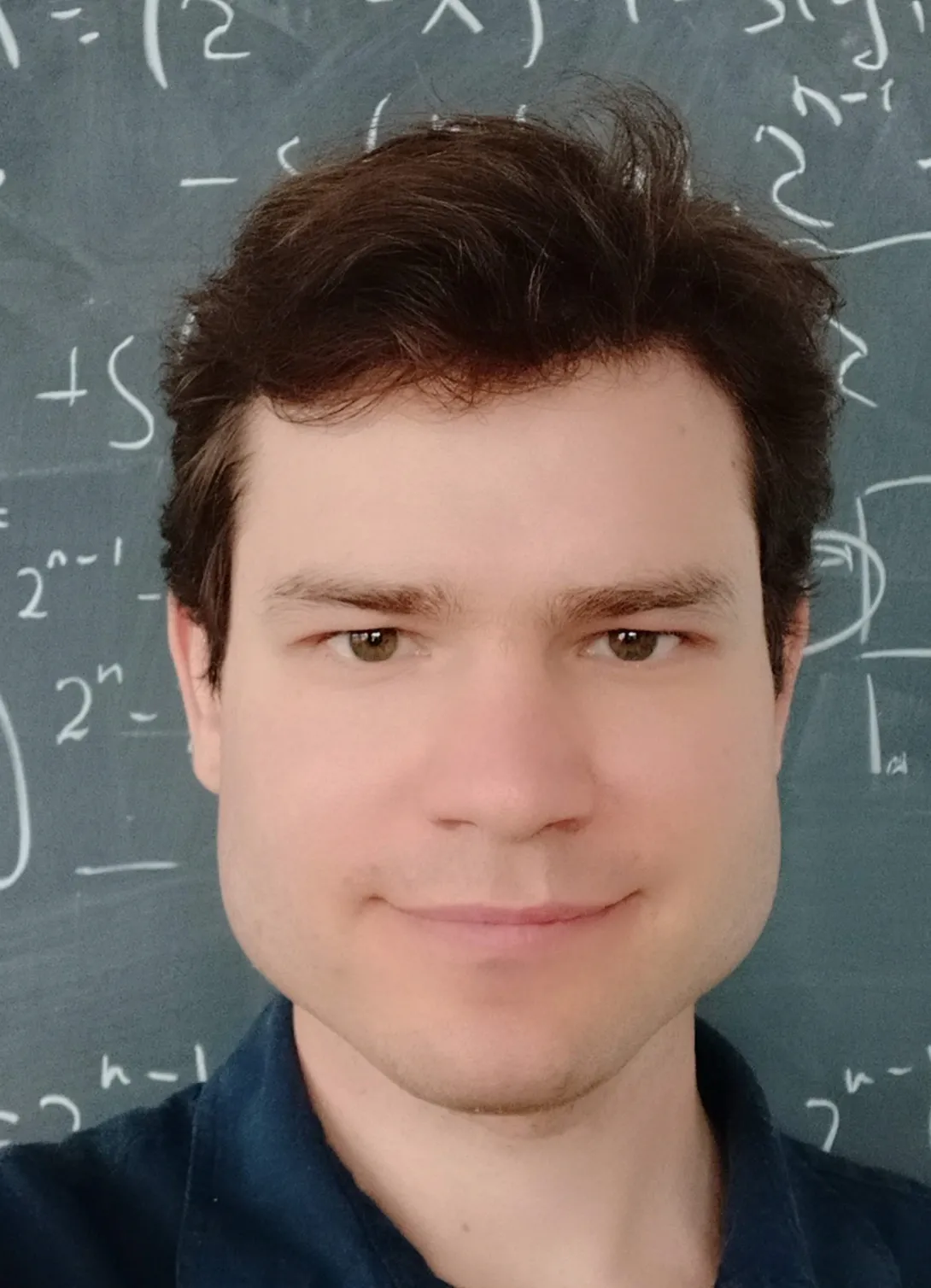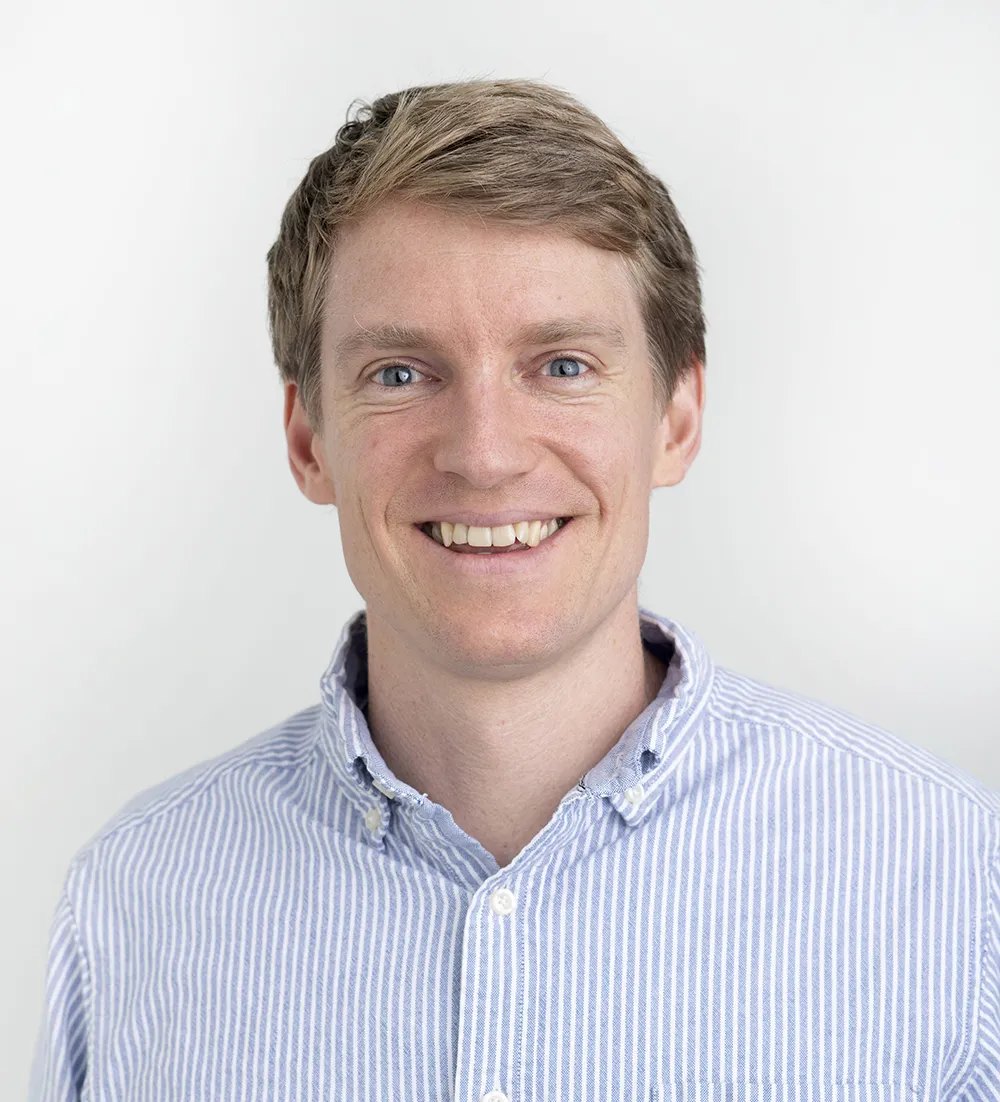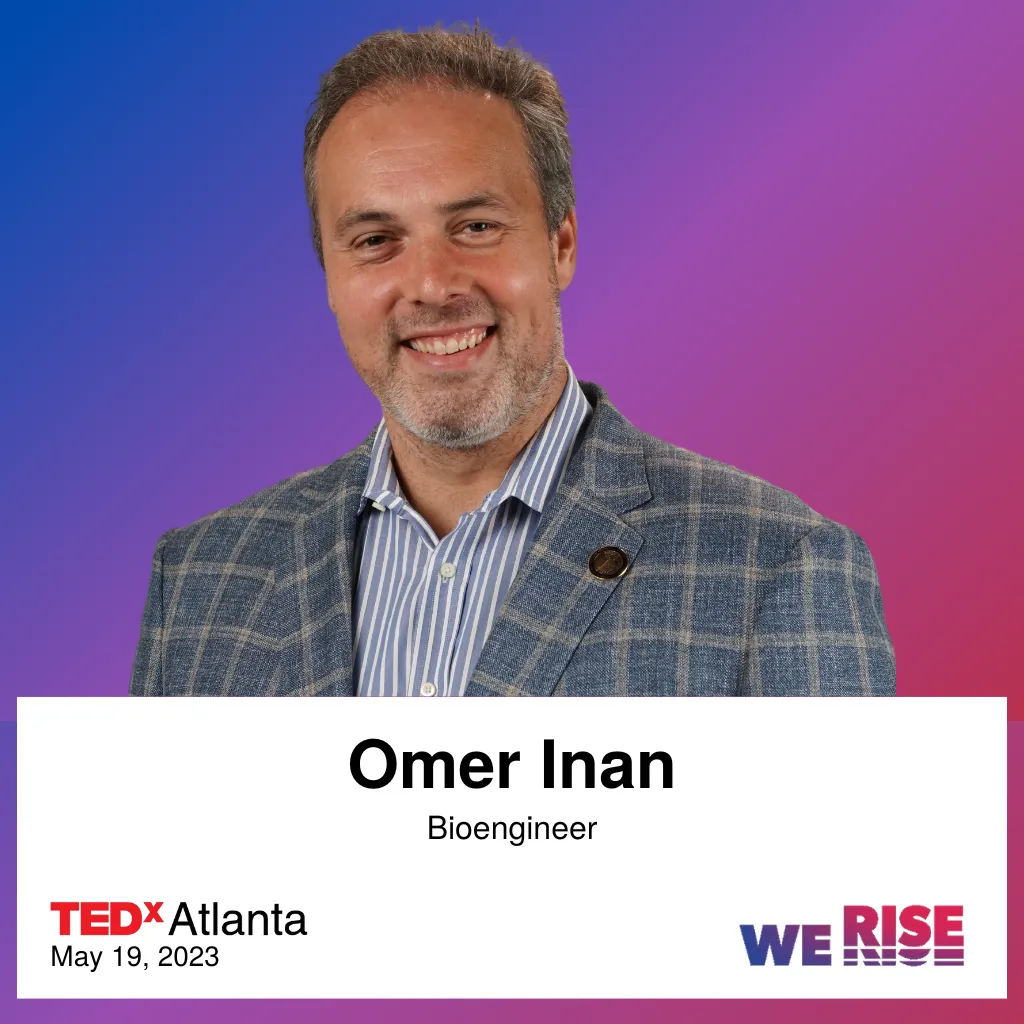Jun. 22, 2023
Thomas Kurfess, Ph.D., P.E., was elected president of the American Society of Mechanical Engineers (ASME)--he will be the 142nd president. Kurfess is the chief manufacturing officer of the Georgia Institute of Technology, and the executive director of the Georgia Tech Manufacturing Institute. He is the HUSCO/Ramirez Distinguished Chair in Fluid Power and Motion Control and professor in the George W. Woodruff School of Mechanical Engineering.
He also serves as the chief technology officer at the National Center for Manufacturing Sciences. He served as the chief manufacturing officer and founding director for the manufacturing science division at Oak Ridge National Laboratory from 2019 to 2021. He served as the assistant director for advanced manufacturing at the Office of Science and Technology Policy in the Executive Office of the President of the United States of America in 2012 and 2013, coordinating advanced manufacturing research and development.
News Contact
Jun. 16, 2023
The discovery of nucleic acids is a recent event in the history of scientific phenomenon, and there is still much learn from the enigma that is genetic code.
Advances in computing techniques though have ushered in a new age of understanding the macromolecules that form life as we know it. Now, one Georgia Tech research group is receiving well-deserved accolades for their applications in data science and machine learning toward single-cell omics research.
Students studying under Xiuwei Zhang, an assistant professor in the School of Computational Science and Engineering (CSE), received awards in April at the Atlanta Workshop on Single-cell Omics (AWSOM 2023).
School of CSE Ph.D. student Ziqi Zhang received the best oral presentation award, while Mihir Birfna, an undergraduate student majoring in computer science, took the best poster prize.
Along with providing computational tools for biological researchers, the group’s papers presented at AWSOM 2023 could benefit populations of people as the research could lead to improved disease detection and prevention. They can also provide a better understanding of causes and treatments of cancer and new ability to accurately simulate cellular processes.
“I am extremely proud of the entire research group and very thankful of their work and our teamwork within our lab,” said Xiuwei Zhang. “These awards are encouraging because it means we are on the right track of developing something that will contribute both to the biology community and the computational community.”
Ziqi Zhang presented the group’s findings of their deep learning framework called scDisInFact, which can carry out multiple key single cell RNA-sequencing (scRNA-seq) tasks all at once and outperform current models that focus on the same tasks individually.
The group successfully tested scDisInFact on simulated and real Covid-19 datasets, demonstrating applicability in future studies of other diseases.
Bafna’s poster introduced CLARIFY, a tool that connects biochemical signals occurring within a cell and intercellular communication molecules. Previously, the inter- and intra-cell signaling were often studied separately due to the complexity of each problem.
Oncology is one field that stands to benefit from CLARIFY. CLARIFY helps to understand the interactions between tumor cells and immune cells in cancer microenvironments, which is crucial for enabling success of cancer immunotherapy.
At AWSOM 2023, the group presented a third paper on scMultiSim. This simulator generates data found in multi-modal single-cell experiments through modeling various biological factors underlying the generated data. It enables quantitative evaluations of a wide range of computational methods in single-cell genomics. That has been a challenging problem due to lack of ground truth information in biology, Xiuwei Zhang said.
“We want to answer certain basic questions in biology, like how did we get these different cell types like skin cells, bone cells, and blood cells,” she said. “If we understand how things work in normal and healthy cells, and compare that to the data of diseased cells, then we can find the key differences of those two and locate the genes, proteins, and other molecules that cause problems.”
Xiuwei Zhang’s group specializes in applying machine learning and optimization skills in analysis of single-cell omics data and scRNA-seq methods. Their main interest area is studying mechanisms of cellular differentiation— the process when young, immature cells mature and take on functional characteristics.
A growing, yet effective approach to research in molecular biology, scRNA-seq gives insight of existence and behavior of different types of cells. This helps researchers better understand genetic disorders, detect mechanisms that cause tumors and cancer, and develop new treatments, cures, and drugs.
If microenvironments filled with various macromolecules and genetic material are considered datasets, the need for researchers like Xiuwei Zhang and her group is obvious. These massive, complex datasets present both challenges and opportunities for the group experienced in computational and biological research.
Collaborating authors include School of CSE Ph.D. students Hechen Li and Michael Squires, School of Electrical and Computer Engineering Ph.D. student Xinye Zhao, Wallace H. Coulter Department of Biomedical Engineering Associate Professor Peng Qiu, and Xi Chen, an assistant professor at Southern University of Science and Technology in Shenzhen, China.
The group’s presentations at AWSOM 2023 exhibited how their work makes progress in biomedical research, as well as advancing scientific computing methods in data science, machine learning, and simulation.
scDisInFact is an optimization tool that can perform batch effect removal, condition-associated key gene detection, and perturbation, which is made possible by considering major variation factors in the data. Without considering all these factors, current models can only do these tasks individually, but scDisInFact can do each task better and all at the same time.
CLARIFY delves into how cells employ genetic material to communicate internally, using gene regulatory networks (GRNs) and externally, called cell-cell interactions (CCIs). Many computational methods can infer GRNs and inference methods have been proposed for CCIs, but until CLARIFY, no method existed to infer GRNs and CCIs in the same model.
scMultiSim simulations perform closer to real-world conditions than current simulators that model only one or two biological factors. This helps researchers more realistically test their computational methods, which can guide directions for future method development.
Whether they be computer scientists, biologists, or non-academics alike, the advantage of interdisciplinary and collaborative research, like Xiuwei Zhang’s group, is its wide-reaching impact that advances technology to improve the human condition.
“We’re exploring the possibilities that can be realized by advanced computational methods combined with cutting edge biotechnology,” said Xiuwei Zhang. “Since biotechnology keeps evolving very fast and we want to help push this even further by developing computational methods, together we will propel science forward.”
News Contact
Bryant Wine, Communications Officer
bryant.wine@cc.gatech.edu
Jun. 13, 2023
Shreyes N. Melkote, who holds the Morris M. Bryan, Jr. Professorship in the George W. Woodruff School of Mechanical Engineering at the Georgia Institute of Technology, won the 2023 SME Gold Medal award which recognizes outstanding service to the manufacturing engineering profession in technical communications through published literature, technical writings, or lectures.
SME is a nonprofit association committed to advancing widespread adoption of manufacturing technologies and developing North America’s talent and capabilities. He was among seven 2023 SME International Honor Award winners are recognized for their significant contributions to manufacturing in the areas of manufacturing technologies, processes, technical writing, education, research and management, and service to SME. The 2023 SME International Awards Gala was held on June 5 at the Royal Park Hotel in Rochester, Michigan.
Melkote also serves as executive director of the Novelis Innovation Hub at Georgia Tech and as associate director of the Georgia Tech Manufacturing Institute. Melkote’s research focuses on the science and technology of manufacturing processes, industrial robotics for manufacturing, and data-driven methods for cyber manufacturing.
For over six decades, SME’s International Honor Awards have identified professionals whose bodies of work have led to critical breakthroughs and advancements in manufacturing technologies, processes, and education as well as honored members for their volunteerism.
“These seven professionals are among the most accomplished thought leaders in manufacturing, and I’m proud to acknowledge they also hold membership in SME,” said Bob Willig, executive director and CEO of SME. “Though their backgrounds are varied, all share a penchant for continuous improvement where status quo just doesn’t cut it.”
Melkote has published over 280 technical papers on these topics, has one U.S. patent and has successfully transitioned technology to industry. Melkote is a recipient of the SME Outstanding Young Manufacturing Engineer Award, the ASME Blackall Machine Tool and Gage Award and several best paper awards. He served as president of SME's North American Manufacturing Research Institution (NAMRI) from 2014-15, and as ASME Swanson fellow and assistant director for Technology at the Advanced Manufacturing National Program Office at NIST from 2015-16. Melkote is a fellow of SME, ASME and CIRP and has been a SME member since 1994.
SME 2023 International Honor Award Recipients:
- SME Gold Medal — Shreyes N. Melkote, Ph.D., FSME, Morris M. Bryan, Jr. Professor of Mechanical Engineering, Georgia Institute of Technology, Atlanta
- Eli Whitney Productivity Award — Lonnie Love, Ph.D., FSME, Fellow, National Security Programs, Sandia National Laboratories, Albuquerque, New Mexico
- Joseph A. Siegel Service Award — Sandra Bouckley, FSME, P.Eng., Executive Director & CEO (retired), 2017 President, SME, Southfield, Michigan
- Donald C. Burnham Manufacturing Management Award — Vaughn M. Hall Jr., International Vice President and General Manager, Corning Precision Materials, Corning Inc., Asan, South Korea
- SME Frederick W. Taylor Research Medal — Shaochen Chen, Ph.D., Chair and Zable Endowed Chair Professor, NanoEngineering Department, University of California, San Diego, San Diego
- SME Albert M. Sargent Progress Award – Subir Chowdhury, FSME, Chairman and CEO, ASI Consulting Group, Bingham Farms, Michigan
- SME Education Award — Laine Mears, Ph.D., FSME, CMfgE, PE, BMW SmartState Endowed Chair of Automotive Manufacturing, University Centennial Professor and Department Chair, Automotive Engineering Department, Clemson University, Clemson, South Carolina
News Contact
May. 17, 2023
Chuck Zhang, GTMI faculty member and the Harold E. Smalley Professor in the H. Milton Stewart School of Industrial and Systems Engineering, is one of five faculty members will help grow the College of Engineering’s work in high-impact cyber-physical systems security (CPSS) as new Cybersecurity Fellows.
Fellows represent expertise in a variety of areas of CPSS, which addresses risks where cyber and physical worlds intersect. That includes the Internet of Things (IoT), industrial systems, smart grids, medical devices, autonomous vehicles, robotics, and more.
“As devices, systems, and the world continue to become more connected, cyber-related threats that were traditionally limited to the digital domain have made their way to physical systems,” said Raheem Beyah, dean of the College, Southern Company Chair, and a cybersecurity expert. “The College of Engineering has world-renowned cybersecurity and artificial intelligence researchers. This new cohort will continue to expand the College’s breadth of expertise and leadership in CPSS.”
The three-year fellowship was made possible by a gift from Kyle Seymour, a 1982 mechanical engineering graduate who retired as president and CEO of S&C Electric Company in 2020. Seymour wanted to help increase cybersecurity-related research and instruction within the College.
School chairs nominated potential fellows, who were evaluated and selected by a committee of senior cybersecurity researchers and College leaders.
Five faculty members will help grow the College of Engineering’s work in high-impact cyber-physical systems security (CPSS) as new Cybersecurity Fellows.
Fellows represent expertise in a variety of areas of CPSS, which addresses risks where cyber and physical worlds intersect. That includes the Internet of Things (IoT), industrial systems, smart grids, medical devices, autonomous vehicles, robotics, and more.
“As devices, systems, and the world continue to become more connected, cyber-related threats that were traditionally limited to the digital domain have made their way to physical systems,” said Raheem Beyah, dean of the College, Southern Company Chair, and a cybersecurity expert. “The College of Engineering has world-renowned cybersecurity and artificial intelligence researchers. This new cohort will continue to expand the College’s breadth of expertise and leadership in CPSS.”
The three-year fellowship was made possible by a gift from Kyle Seymour, a 1982 mechanical engineering graduate who retired as president and CEO of S&C Electric Company in 2020. Seymour wanted to help increase cybersecurity-related research and instruction within the College.
School chairs nominated potential fellows, who were evaluated and selected by a committee of senior cybersecurity researchers and College leaders.
News Contact
Walter Rich
May. 05, 2023
Centipedes are known for their wiggly walk. With tens to hundreds of legs, they can traverse any terrain without stopping.
“When you see a scurrying centipede, you're basically seeing an animal that inhabits a world that is very different than our world of movement,” said Daniel Goldman, the Dunn Family Professor in the School of Physics. “Our movement is largely dominated by inertia. If I swing my leg, I land on my foot and I move forward. But in the world of centipedes, if they stop wiggling their body parts and limbs, they basically stop moving instantly.”
Intrigued to see if the many limbs could be helpful for locomotion in this world, a team of physicists, engineers, and mathematicians at the Georgia Institute of Technology are using this style of movement to their advantage. They developed a new theory of multilegged locomotion and created many-legged robotic models, discovering the robot with redundant legs could move across uneven surfaces without any additional sensing or control technology as the theory predicted.
These robots can move over complex, bumpy terrain — and there is potential to use them for agriculture, space exploration, and even search and rescue.
The researchers presented their work in the papers, “Multilegged Matter Transport: A Framework for Locomotion on Noisy Landscapes,” in Science in May and “Self-Propulsion via Slipping: Frictional Swimming in Multilegged Locomotors,” in Proceedings of the National Academy of Sciences in March.
A Leg Up
For the Science paper, the researchers were motivated by mathematician Claude Shannon’s communication theory, which demonstrates how to reliably transmit signals over distance, to understand why a multilegged robot was so successful at locomotion. The theory of communication suggests that one way to ensure a message gets from point A to point B on a noisy line isn’t to send it as an analog signal, but to break it into discrete digital units and repeat these units with an appropriate code.
“We were inspired by this theory, and we tried to see if redundancy could be helpful in matter transportation,” said Baxi Chong, a physics postdoctoral researcher. “So, we started this project to see what would happen if we had more legs on the robot: four, six, eight legs, and even 16 legs.”
A team led by Chong, including School of Mathematics postdoctoral fellow Daniel Irvine and Professor Greg Blekherman, developed a theory that proposes that adding leg pairs to the robot increases its ability to move robustly over challenging surfaces — a concept they call spatial redundancy. This redundancy makes the robot’s legs successful on their own without the need for sensors to interpret the environment. If one leg falters, the abundance of legs keeps it moving regardless. In effect, the robot becomes a reliable system to transport itself and even a load from A to B on difficult or “noisy” landscapes. The concept is comparable to how punctuality can be guaranteed on wheeled transport if the track or rail is smooth enough but without having to engineer the environment to create this punctuality.
“With an advanced bipedal robot, many sensors are typically required to control it in real time,” Chong said. “But in applications such as search and rescue, exploring Mars, or even micro robots, there is a need to drive a robot with limited sensing. There are many reasons for such sensor-free initiative. The sensors can be expensive and fragile, or the environments can change so fast that it doesn’t allow enough sensor-controller response time.”
To test this, Juntao He, a Ph.D. student in robotics, conducted a series of experiments where he and Daniel Soto, a master’s graduate in the George W. Woodruff School of Mechanical Engineering, built terrains to mimic an inconsistent natural environment. He then tested the robot by increasing its number of legs by two each time, starting with six and eventually expanding to 16. As the leg count increased, the robot could more agilely move across the terrain, even without sensors, as the theory predicted. Eventually, they tested the robot outdoors on real terrain, where it was able to traverse in a variety of environments.
“It's truly impressive to witness the multilegged robot's proficiency in navigating both lab-based terrains and outdoor environments,” Juntao said. “While bipedal and quadrupedal robots heavily rely on sensors to traverse complex terrain, our multilegged robot utilizes leg redundancy and can accomplish similar tasks with open-loop control.”
Next Steps
The researchers are already applying their discoveries to farming. Goldman has co-founded a company that aspires to use these robots to weed farmland where weedkillers are ineffective.
“They’re kind of like a Roomba but outside for complex ground,” Goldman said. “A Roomba works because it has wheels that function well on flat ground. Until the development of our framework, we couldn’t confidently predict locomotor reliability on bumpy, rocky, debris-ridden terrain. We now have the beginnings of such a scheme, which could be used to ensure that our robots traverse a crop field in a certain amount of time.”
The researchers also want to refine the robot. They know why the centipede robot framework is functional, but now they’re determining the optimal number of legs to achieve motion without sensing in a way that is cost-effective yet still retains the benefits.
“In this paper, we asked, ‘How do you predict the minimum number of legs to achieve such tasks?’” Chong said. “Currently we only prove that the minimum number exists, but we don't know that exact number of legs needed. Further, we need to better understand the tradeoff between energy, speed, power, and robustness in such a complex system.”
CITATION:
Baxi Chong et al., Multilegged matter transport: A framework for locomotion on noisy landscapes.Science380,509-515(2023).DOI:10.1126/science.ade4985
News Contact
Tess Malone, Senior Research Writer/Editor
May. 03, 2023
Lisa Marks is launching the ancient craft of fishing villages into space vehicle design. Her work adapting traditional textile handcraft to modern problems created a unique opportunity for collaboration cleaning up space debris.
According to NASA's Orbital Debris Program Office (OPDO), this debris jeopardizes future space projects. Large objects like rocket bodies and non-functional satellites are the source of fragmentation debris.
The OPDO website says removal of even five of the highest-risk objects per year could stabilize the low Earth orbit debris environment.
A research team with members from the Georgia Tech Research Institute, the Aerospace Systems Design Laboratory, and the Space Systems Design Laboratory has developed a concept using a net to capture and de-orbit large debris.
A mutual connection at Tech's GVU recommended that the team speak to Lisa Marks, assistant professor in the School of Industrial Design, based on her work combining traditional textile with new materials and methods.
Putting Textiles in Space Requires Creative Expertise
“There’s a lot of different projects on space debris happening all around the world,” Marks said, “and there’ve been a few concept papers talking about using a net.”
“But all the drawings of the net are basic concepts, just a square with a few hatches through it. No one has figured out what that net might be.”
Marks researches ways to combine traditional textile handcraft with algorithmic modeling. “I specialize in analyzing the shape of every stitch and how we can use that stitch differently. Can we create new patterns through coding, or make it larger and out of wood?”
“It allows me to think really creatively about how we can use different textiles.”
This innovative, exploratory approach is a natural fit to create a net for a job no has ever done. “There's a lot of technical considerations with this,” Marks said.
“It must pack incredibly small, weigh very little, and still be strong enough to capture and drag a rocket fuselage. There are considerations just for a material to exist in space. It needs to have low UV reactivity, low off gassing.”
“We need to understand every single little aspect of each of these techniques in order to do this.”
Static Nets Catch Fish; Slippery Nets Catch Rockets
Marks is working with Teflon, using the same knots used for fishing nets, but the non-traditional material means the nets work differently than fishing nets, she said. “These knots are made to be static, because you don’t want fish to get through the nets. But because Teflon is so slippery, the knots move around.”
“I think it will help the net’s strength, because the net will deform around irregular shapes before it breaks. What makes it unsuitable for fishing and annoying to work with becomes a huge benefit for what we need it to do.”
Some traditional handcraft techniques are dying out, and Marks sees projects like this as a reason preserving these techniques is important. “We don’t know what problems we’re going to have to solve in the future, and these crafts can be used in really surprising ways.”
“I would not have thought, ‘Netted filet lace, that’s how we’re going to solve a space problem!’ But if we lose this type of lace, we can’t solve space problems with it.”
May. 02, 2023
Semiconductors, or microchips, are vital to life in the modern world. They’re used in the microwave you heated your breakfast in this morning, the car you drove to work, the mobile phone you shouldn’t use while driving, the bank ATM you visited, and the screened device you’re reading this story on.
They’re in our TVs, refrigerators, and washing machines, helping us live comfortable lives. They also help us stay alive as part of the medical network, used in pacemakers, blood pressure monitors, and MRI machines, among other things. Also, our national economic and defense systems rely on them. Basically, semiconductors control and manage the flow of information in the machinery that keeps the world going.
And right now, at Georgia Tech, researchers are working to innovate chip technology to ensure that U.S. semiconductor development is globally competitive, reliable, sustainable, and resilient, today and in the future.
“If you look at semiconductors, or the whole area of computing, it spans across Georgia Tech — across many different schools and disciplines,” said Arijit Raychudhury, professor and Steve W. Chaddick Chair in the School of Electrical and Computer Engineering (ECE). “Starting with physics and chemistry, where we essentially learn how different types of materials will react, to materials science and engineering, to electrical engineering and computer engineering, to computer science.”
It's a diverse, multidisciplinary enterprise from bottom to top, Raychudhury noted. And there is still plenty of room at the bottom, as theoretical physicist Richard P. Feynman famously said more than 60 years ago, predicting that one day we’d be making things at the atomic level. We are. It’s a familiar realm to Victor Fung and his lab, where they are designing new materials for semiconductors from the ground up, atom by atom.
“We are interested in exploring how to translate the latest advances in AI and machine learning to aid in accelerating computational materials simulations and materials discovery,” said Fung, assistant professor in the School of Computational Science. “We’ve been developing methods which can accurately predict a wide range of materials’ properties, to greatly facilitate high-throughput materials screening.”
Fung’s lab is using AI to discover previously unstudied materials with the electronic properties to build into chips. This approach to creating “designer” semiconductors would be significantly faster and cover more of the materials space than current methods.
Improving the Landscape
Smaller, more efficient, and more powerful are all part of the constantly evolving landscape in semiconductor research and development. It’s a very expensive landscape. While many chips are about the size of a fingernail, they are among the most complex human-made objects on Earth. Just building a semiconductor fabrication factory costs billions of dollars.
For a chemical engineer like Michael Filler, that sounds like opportunity.
“Chemical engineers think about how we produce products on a massive scale,” said Filler, associate professor in the School of Chemical and Biomolecular Engineering and associate director of the Institute for Electronics and Nanotechnology (IEN).
Filler, whose research involves the growing of semiconductor components, like transistors, from seed particles, is aiming to help democratize the process of chip development, bringing down the cost substantially while maintaining performance. In a not too distant future, that could mean an individual at home printing a chip on a machine similar to a 3D printer.
“Imagine a laser printer that can literally spit out custom electronics in a matter of minutes,” Filler said. “We’re big believers in the individual’s ability to be creative and know what they want to build for their applications. Ultimately, we’re interested in giving makers and prototypers opportunities to customize electronics.”
He’s in the right place for the far-reaching research he has in mind, adding, “We are so blessed with great facilities at Georgia Tech. It would be hard to imagine working somewhere else, because very few places have the diversity and quality of tooling we have here.”
IEN, which facilitates much of the semiconductor research at Georgia Tech, is based in the Marcus Nanotechnology Building, with its state-of-the-art micro/nano fabrication facilities such as the shared cleanroom space and a laser machine lab for micromachining.
But it is the range of expertise and creativity among faculty and students who are making IEN and Georgia Tech a thought leader in semiconductor research. This is evidenced by Tech’s recent grant of $65.7 million from the Semiconductor Research Corporation and the Defense Research Projects Agency to launch two new interdisciplinary research centers.
Events like Georgia Tech Chip Day (May 2) and Nanowire Week, an international gathering happening in Atlanta in October, also speak to Tech’s growing influence in this area.
Answering the Call
The Covid-19 pandemic clarified just how difficult it can be to make more chips. A shortage of semiconductors affected the supply of phones, computers, and other commonly used items during the global shutdown. Increased demand, depleted reserves, and too few manufacturing plants and workers significantly crippled the supply chain.
“The high degree of geographic concentration in certain parts of the semiconductor supply chain has recently created a heightened risk of supply interruptions,” said Chip White, Schneider National Chair in Transportation and Logistics and professor in the H. Milton Stewart School of Industrial and Systems Engineering (ISyE). “Such interruptions and resulting wild fluctuations in semiconductor demand can threaten the nation’s public health, defense, and economic security.”
With that in mind, translational supply chain research is going on in several places on campus, White said, including the Supply Chain and Logistics Institute and the NSF AI Research Institute for Advances in Optimization. White and his colleagues are developing software platforms for stress testing manufacturing supply chains. The goal is to identify vulnerabilities and risk mitigation procedures to design and operate next generation supply chains for critical industries such as the semiconductor industry, to improve global competitiveness and strike a balance between market forces and national security.
In an effort to address and feed the next generation demand for chips, the Biden administration recently launched a massive effort to outcompete China in semiconductor manufacturing, offering $39 billion in funding incentives for companies seeking to build plants in the U.S.
Another related area of importance in the ongoing development of semiconductors is growing the workforce of the future, and that includes a new wave of researchers. This is a role that Jennifer Hasler takes seriously.
“I have a strong interest and belief in mentoring,” said Hasler, ECE professor and founder of the Integrated Computational Electronics lab at Georgia Tech. She’s proven, theoretically at least, that the technology already exists to build a silicon-based version of the human cerebral cortex (which would cost billions of dollars to design and build), but one of her favorite roles is working with new, young faculty.
“It’s a personal thing for me, but it’s one of the coolest things I’m involved in,” she said. “When they come to Georgia Tech, they see how big this place is, bigger than a company. I like to say to them, ‘Let’s calm down, take a breath, you’re good, so let’s go make some cool stuff. Let’s get some momentum going.’”
For Raychowdhury, director of the new Center for the Co-Design of Cognitive Systems (part of the JUMP 2.0 program), developing the skilled workforce of the future means answering the call of the nation.
“This is one of the largest ECE departments in the country, with many, many talented students,” he said. “And given the need and shortage of skilled professionals in this particular area, I think it’s critical for us to create that kind of pipeline.” Last year, ECE undergraduate students started taking a new, two-semester course, sponsored by Apple, in which they actually build microprocessors from scratch.
“This is completely new,” Raychowdhury said. “It’s expensive to offer this course, but we plan to keep doing it and we’re in conversations with other companies that want to invest in workforce development. So, in addition to doing fantastic research, we want to be sensitive to the needs of the country and a new generation.”
News Contact
Writer: Jerry Grillo
Apr. 19, 2023
Anton Bernshteyn is forging connections and creating a language to help computer scientists and mathematicians collaborate on new problems — in particular, bridging the gap between solvable, finite problems and more challenging, infinite problems. Now, an NSF CAREER grant will help him achieve that goal.
The National Science Foundation Faculty Early Career Development Award is a five-year grant designed to help promising researchers establish a foundation for a lifetime of leadership in their field. Known as CAREER awards, the grants are NSF’s most prestigious funding for untenured assistant professors.
Bernshteyn, an assistant professor in the School of Mathematics, will focus on “Developing a unified theory of descriptive combinatorics and local algorithms” — connecting concepts and work being done in two previously separate mathematical and computer science fields. “Surprisingly,” Bernshteyn says, “it turns out that these two areas are closely related, and that ideas and results from one can often be applied in the other.”
“This relationship is going to benefit both areas tremendously,” Bernshteyn says. “It significantly increases the number of tools we can use”
By pioneering this connection, Bernshteyn hopes to connect techniques that mathematicians use to study infinite structures (like dynamic, continuously evolving structures found in nature), with the algorithms computer scientists use to model large – but still limited – interconnected networks and systems (like a network of computers or cell phones).
“The final goal, for certain types of problems,” he continues, “is to take all these questions about complicated infinite objects and translate them into questions about finite structures, which are much easier to work with and have applications in practical large-scale computing.”
Creating a unified theory
It all started with a paper Bernshteyn wrote in 2020, which showed that mathematics and computer science could be used in tandem to develop powerful problem-solving techniques. Since the fields used different terminology, however, it soon became clear that a “dictionary” or a unified theory would need to be created to help specialists communicate and collaborate. Now that dictionary is being built, bringing together two previously-distinct fields: distributed computing (a field of computer science), and descriptive set theory (a field of mathematics).
Computer scientists use distributed computing to study so-called “distributed systems,” which model extremely large networks — like the Internet — that involve millions of interconnected machines that are operating independently (for example, blockchain, social networks, streaming services, and cloud computing systems).
“Crucially, these systems are decentralized,” Bernshteyn says. ”Although parts of the network can communicate with each other, each of them has limited information about the network’s overall structure and must make decisions based only on this limited information.” Distributed systems allow researchers to develop strategies — called distributed algorithms — that “enable solving difficult problems with as little knowledge of the structure of the entire network as possible,” he adds.
At first, distributed algorithms appear entirely unrelated to the other area Bernshteyn’s work brings together: descriptive set theory, an area of pure mathematics concerned with infinite sets defined by “simple” mathematical formulas.
“Sets that do not have such simple definitions typically have properties that make them unsuitable for applications in other areas of mathematics. For example, they are often non-measurable – meaning that it is impossible, even in principle, to determine their length, area, or volume," Bernshteyn says.
Because undefinable sets are difficult to work with, descriptive set theory aims to understand which problems have “definable”— and therefore more widely applicable— solutions. Recently, a new subfield called descriptive combinatorics has emerged. “Descriptive combinatorics focuses specifically on problems inspired by the ways collections of discrete, individual objects can be organized,” Bernshteyn explains. “Although the field is quite young, it has already found a number of exciting applications in other areas of math.”
The key connection? Since the algorithms used by computer scientists in distributed computing are designed to perform well on extremely large networks, they can also be used by mathematicians interested in infinite problems.
Solving infinite problems
Infinite problems often occur in nature, and the field of descriptive combinatorics has been particularly successful in helping to understand dynamical systems: structures that evolve with time according to specified laws (such as the flow of water in a river or the movement of planets in the Solar System). “Most mathematicians work with continuous, infinite objects, and hence they may benefit from the insight contributed by descriptive set theory,” Bernshteyn adds.
However, while infinite problems are common, they are also notoriously difficult to solve. “In infinite problems, there is no software that can tell you if the problem is solvable or not. There are infinitely many things to try, so it is impossible to test all of them. But if we can make our problems finite, we can sometimes determine which ones can and cannot be solved efficiently,” Bernshteyn says. “We may be able to determine which combinatorial problems can be solved in the infinite setting and get an explicit solution.”
“It turns out that, with some work, it is possible to implement the algorithms used in distributed computing on infinite networks, providing definable solutions to various combinatorial problems,” Bernshteyn says. “Conversely, in certain limited settings it is possible to translate definable solutions to problems on infinite structures into efficient distributed algorithms — although this part of the story is yet to be fully understood.”
A new frontier
As a recently emerged field, descriptive combinatorics is rapidly evolving, putting Bernshteyn and his research on the cutting edge of discovery. “There’s this new communication between separate fields of math and computer science—this huge synergy right now—it’s incredibly exciting,” Bernshteyn says.
Introducing new researchers to descriptive combinatorics, especially graduate students, is another priority for Bernshteyn. His CAREER grant funds will be especially dedicated to training graduate students who might not have had prior exposure to descriptive set theory. Bernshteyn also aims to design a suite of materials ranging from textbooks, lecture notes, instructional videos, workshops, and courses to support students and scholars as they enter this new field.
“There’s so much knowledge that’s been acquired,” Bernshteyn says. “There’s work being done by people within computer science, set theory, and so on. But researchers in these fields speak different languages, so to say, and a lot of effort needs to go into creating a way for them to understand each other. Unifying these fields will ultimately allow us to understand them all much better than we did before. Right now we’re only starting to glimpse what’s possible.”
News Contact
Written by Selena Langner
Apr. 18, 2023
Our world is powered by chemical reactions. From new medicines and biotechnology to sustainable energy solutions developing and understanding the chemical reactions behind innovations is a critical first step in pioneering new advances. And a key part of developing new chemistries is discovering how the rates of those chemical reactions can be accelerated or changed.
For example, even an everyday chemical reaction, like toasting bread, can substantially change in speed and outcome — by increasing the heat, the speed of the reaction increases, toasting the bread faster. Adding another chemical ingredient — like buttering the bread before frying it — also changes the outcome of the reaction: the bread might brown and crisp rather than toast. The lesson? Certain chemical reactions can be accelerated or changed by adding or altering key variables, and understanding those factors is crucial when trying to create the desired reaction (like avoiding burnt toast!).
Chemists currently use quantum chemistry techniques to predict the rates and energies of chemical reactions, but the method is limited: predictions can usually only be made for up to a few hundred atoms. In order to scale the predictions to larger systems, and predict the environmental effects of reactions, a new framework needs to be developed.
Jesse McDaniel (School of Chemistry and Biochemistry) is creating that framework by leveraging computer modeling techniques. Now, a new NSF CAREER grant will help him do so. The National Science Foundation Faculty Early Career Development Award is a five-year grant designed to help promising researchers establish a foundation for a lifetime of leadership in their field. Known as CAREER awards, the grants are NSF’s most prestigious funding for untenured assistant professors.
“I am excited about the CAREER research because we are really focusing on fundamental questions that are central to all of chemistry,” McDaniel says about the project.
Pioneering a new framework
“Chemical reactions are inherently quantum mechanical in nature,” McDaniel explains. “Electrons rearrange as chemical bonds are broken and formed.” While this type of quantum chemistry can allow scientists to predict the rates and energies of different reactions, these predictions are limited to only tens or hundreds of atoms. That’s where McDaniel’s team comes in. They’re developing modeling techniques based on quantum chemistry that could function over multiple scales, using computer models to scale the predictions. They hope this will help predict environmental effects on chemical reaction rates.
By developing modeling techniques that can be applied to reactions at multiple scales, McDaniel aims to expand scientist’s ability to predict and model chemical reactions, and how they interact with their environments. “Our goal is to understand the microscopic mechanisms and intermolecular interactions through which chemical reactions are accelerated within unique solvation environments such as microdroplets, thin films, and heterogenous interfaces,” McDaniel says. He hopes that it will allow for computational modeling of chemical reactions in much larger systems.
Interdisciplinary research
As a theoretical and computational chemist, McDaniel’s chemistry experiments don’t take place in a typical chemistry lab — rather, they take place in a computer lab, where Georgia Tech’s robust computer science and software development community functions as a key resource.
“We run computer simulations on high performance computing clusters,” McDaniel explains. “In this regard, we benefit from the HPC infrastructure at Georgia Tech, including the Partnership for an Advanced Computing Environment (PACE) team, as well as the computational resources provided in the new CODA building.”
“Software is also a critical part of our research,” he continues. “My colleague Professor David Sherrill and his group are lead developers of the Psi4 quantum chemistry software, and this software comprises a core component of our multi-scale modeling efforts.”
In this respect, McDaniel is eager to to involve the next generation of chemists and computer scientists, showcasing the connection between these different fields. McDaniel’s team will partner with regional high school teachers, collaborating to integrate software and data science tools within the high school educational curriculum.
“One thing I like about this project,” McDaniel says, “is that all types of chemists — organic, inorganic, analytical, bio, physical, etc. — care about how chemical reactions happen, and how reactions are influenced by their surroundings.”
News Contact
Written by Selena Langner
Apr. 06, 2023
Professor Omer Inan is set to take the stage at the upcoming TEDxAtlanta 2023: We Rise event on May 19.
As the Linda J. and Mark C. Smith Chair in bioscience and bioengineering in Tech’s School of Electrical and Computer Engineering (ECE), Inan designs clinically relevant medical devices and systems and translates them from the lab to patient care applications. In his talk, Inan will be discussing his groundbreaking research on wearable healthcare technologies and the potential they hold for revolutionizing the field.
Inan is a member of the prestigious Medical and Biological Engineering (AIMBE) College of Fellows (elected in 2022) for his “outstanding contributions to the non-invasive assessment of the mechanical aspects of cardiovascular health and performance using wearable devices.” Additional achievements include an Academy Award for Technical Achievement from The Academy of Motion Picture Arts and Sciences (The Oscars, 2021), the Georgia Power Professor of Excellence for the College of Engineering (2019), and the National Science Foundation Faculty Early Career Development Program award (NSF CAREER, 2018).
TEDxAtlanta 2023: WE RISE brings together an impressive group of participants from diverse backgrounds, experiences, and perspectives. The speakers include entrepreneurs, activists, educators, artists, scientists, and many other changemakers who have risen above challenges to make a positive impact on the world.
The event's participants will share their stories and insights on how they have overcome adversity, embraced innovation, and challenged the status quo to make a difference in their communities and beyond. Through their talks, they will inspire and empower attendees to rise above their own challenges and take action towards creating a better future for all.
TEDxAtlanta 2023: WE RISE will take place on Friday, May 19 from 9 a.m. – 6:30 p.m. at the Rialto Center for the Arts (80 Forsyth Street Northwest Atlanta, GA 30303). Learn more and purchase tickets at tedxatlanta.com.
News Contact
Dan Watson
